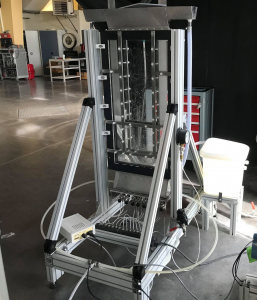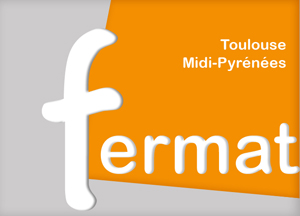Interactions in multiphase flows
Interaction of two oscillating bubbles confined in a thin planar cell
Contacts: Patricia Ern, Véronique Roig
PhD Thesis: Audrey Filella (2015) – PhD part 1 PhD part 2
In real industrial or environmental applications, when inertial bubbles interact, they often display a self-induced oscillating path. Up to now, most of the studies dedicated to bubble interactions have focused on situations involving stable wakes, which greatly facilitate numerical simulations or experimental observations. We here use a thin-gap cell, allowing us to analyze the interaction of two oscillating bubbles thanks to simultaneous measurements of the bubbles’ paths and of the liquid velocity field. This research revealed the contrasted role of (i) the ascending flow generated by the leading bubble, leading to a slowly varying vertical entrainment of the trailing bubble, and the role of (ii) the vortices released by the leading bubble inducing strong localized horizontal deviations on a bubble in line or in oblique positioning.
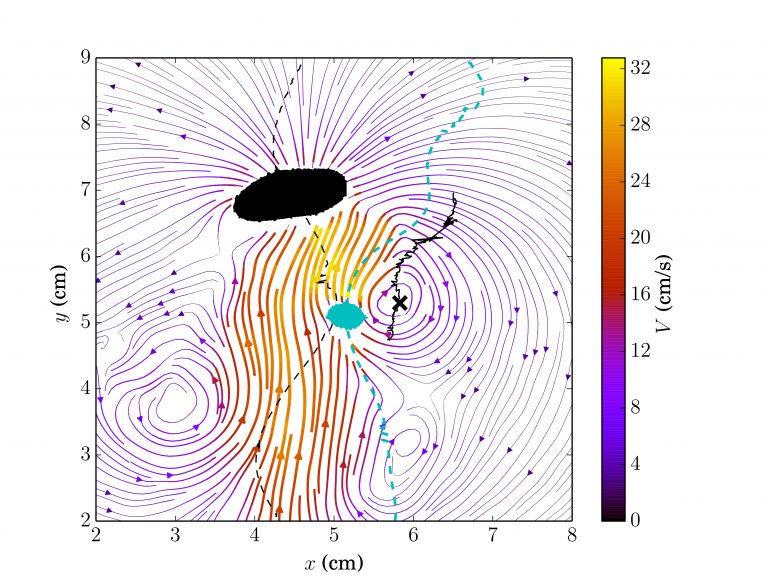
Coalescence in a swarm of inertial bubbles confined in a thin planar cell
Contacts: Javier Ruiz-Ruz, Véronique Roig, Patricia Ern
Collaboration: C. Martínez-Bazán (Univ. Granada, Spain)
We explore experimentally the evolution of a swarm of bubbles injected with a unique diameter at the bottom of a vertical thin-gap cell filled with a fluid initially at rest. Direct observation of all the events leading to coalescence allows direct measurements and modeling of the major terms to be closed in a population balance equation such as the frequency of coalescence.
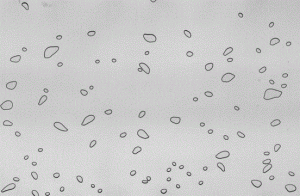
Bubbles in viscous Newtonian and non-Newtonian fluids
Contacts: Javier Ruiz-Ruz, Véronique Roig, Patricia Ern
Collaboration: C. Martínez-Bazán (Univ. Granada, Spain)
In the framework of ANR Alligator [avec un lien vers la page de l’ANR en question], we investigate experimentally the behavior of bubbles freely rising in viscous Newtonian or non-Newtonian fluids confined in a thin-gap cell. Different situations are considered: the isolated bubble as well as coalescing and non-coalescing bubble swarms.
Multiscale interactions in air-water gravity driven exchange flows
Contacts: Véronique Roig, Olivier Praud, Jacques Magnaudet
Post-doc: Samuel Mer (2018-2019)
PhD Thesis: Cyril Vettorello
We study several air-water gravity-driven exchange flows such as when a tank of water discharges at the bottom in an initially empty enclosure or during the emptying of a water bottle. Experiments show that in these flows a robust pressure-driven oscillator (the famous glug-glug!) coexists with complex two-phase flows dynamics involving multiple topological changes. Simulating such gas-liquid flows involving a wide range of spatial and temporal scales remains a major challenge nowadays, as the computational cost associated with direct numerical simulation still makes this approach unaffordable. A common alternative is the two-fluid Euler–Euler formulation that avoids solving all scales and that uses semi-empirical closures of mass, momentum and energy exchanges between the two fluids. We have tested some available closures considering separately large gas structures and smaller bubbles and making these two populations evolve and possibly exchange mass according to their interactions with the surrounding liquid in the simplest configuration of the emptying of a water bottle. We simulate this experiment with the NEPTUNE_CFD code.
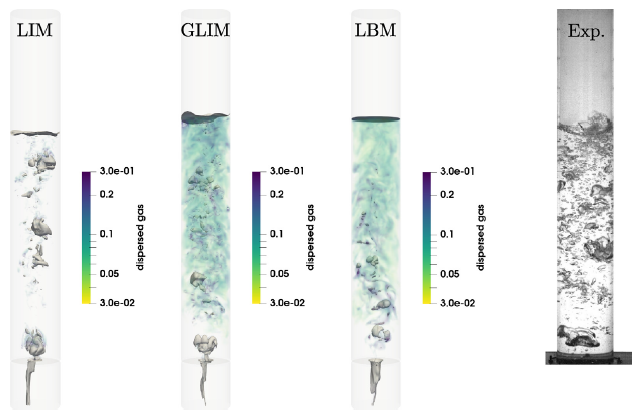
Hydrodynamical interactions in a swarm of cylinders
Contacts: Véronique Roig, Patricia Ern
PhD Thesis: Dylan Letessier
General framework: ANR Muscats
In the framework of ANR Muscats, we study experimentally the agitation in a group of inertial cylinders released in a liquid at rest or in a uniform ascending flow. In the present case, cylinders are confined in a thin-gap cell. We intend to measure and model the statistical properties of the agitation of the bodies or of the carrying liquid.
